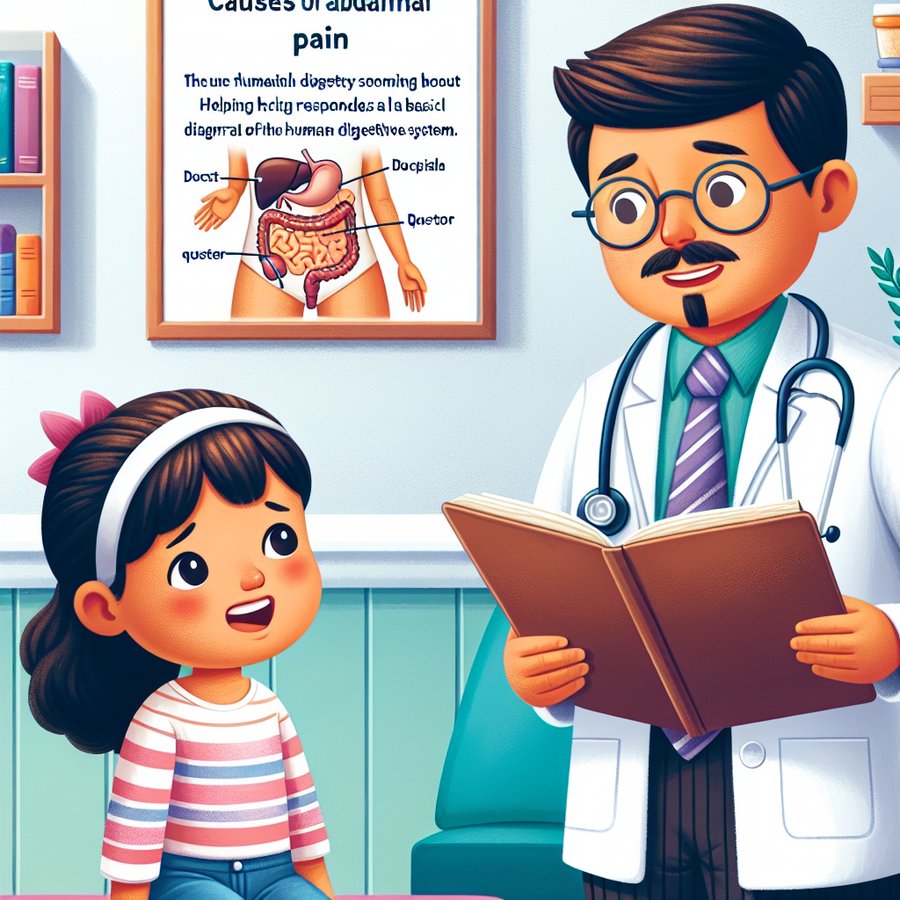Understanding pediatric abdominal pain: Causes and responses is a critical aspect of child healthcare that can often puzzle and worry parents and caregivers. Abdominal pain in children can arise from various factors, ranging from transient and benign to indications of a more serious underlying condition. This guide delves into the common causes of abdominal discomfort in young ones and provides insights into how parents can effectively respond to their child’s pain.
Identifying the Causes of Pediatric Abdominal Pain
Pediatric abdominal pain can stem from a myriad of sources. Understanding these sources is the first step towards providing the correct response. Acute conditions like appendicitis, urinary tract infections, and constipation are common culprits. However, chronic issues such as irritable bowel syndrome (IBS) and gastritis should not be overlooked. Additionally, non-physical factors like stress and anxiety can also manifest as abdominal discomfort in children.
Parents should observe other accompanying symptoms such as fever, vomiting, diarrhea, or blood in the stool, as they can help pinpoint the underlying cause. A timely visit to a healthcare provider is crucial, especially if the pain is severe, persistent, or accompanied by other worrying signs. For a deeper understanding of when to seek medical attention, reading about navigating your baby’s first cold symptoms and when to call the doctor can offer valuable insights.
Understanding Pediatric Abdominal Pain: Causes and Responses
When tackling pediatric abdominal pain, it’s essential to understand both the cause and the appropriate response. For instance, if the pain is due to constipation, dietary adjustments and hydration might offer relief. In contrast, conditions like appendicitis require immediate medical intervention. The key is to assess the situation carefully and respond accordingly.
Recognizing signs of more severe conditions is also critical. Symptoms that demand urgent medical attention include severe pain, pain located in the lower right quadrant of the abdomen, prolonged vomiting, and signs of dehydration. Understanding these signs can be lifesaving. For further reading on recognizing critical signs in infants, recognizing signs of food allergies in infants provides additional context on the importance of vigilance in child health.
Practical Steps for Managing Pediatric Abdominal Pain at Home
While not all abdominal pain in children can be managed at home, understanding how to provide comfort and initial care is invaluable. Simple measures such as ensuring the child rests, applying a warm compress to the abdomen, and offering clear fluids can alleviate symptoms for minor issues. Additionally, maintaining a diary of the child’s symptoms, including their frequency, duration, and severity, can be incredibly useful when consulting healthcare providers.
It’s also beneficial to educate older children on the importance of expressing their symptoms accurately. Encouraging open communication about how their stomach feels and other symptoms they experience can aid in quicker diagnoses and treatment. For insights on enhancing communication with children about health, the importance of handwashing in preventing infant illnesses includes tips on discussing health practices with young ones.
In conclusion, understanding pediatric abdominal pain requires awareness of its causes, symptoms, and effective responses. While some conditions can be managed with home care, others necessitate professional medical treatment. By staying informed and vigilant, parents and caregivers can ensure the well-being of their children. For more information on pediatric health, visit Baby Whys and Hows.













